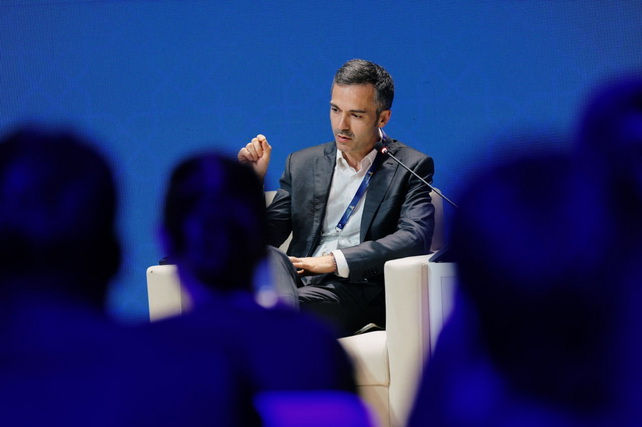
BCG: Uzbekistan Poised for EV Breakthrough — Low TCO and Strong Growth Potential
BCG: Uzbekistan Poised for EV Breakthrough — Low TCO and Strong Growth Potential
Tashkent, Uzbekistan (UzDaily.com) — During the panel session “Industry: Unlocking New Potential”, held on June 10 as part of the Tashkent International Investment Forum (TIIF), Giuseppe Collino, Managing Director and Partner at Boston Consulting Group (BCG), shared a strategic outlook on the future of Uzbekistan’s automotive industry.
Collino emphasized that the sector is on the verge of a major transformation, driven both by Uzbekistan’s inherent competitive advantages and global trends — particularly the surging adoption of electric vehicles (EVs).
He noted that Uzbekistan remains the leading car manufacturer in Central Asia. Local automotive giants UzAuto and ADM have significantly ramped up production in recent years, creating a strong industrial base for future growth. According to BCG forecasts, the Uzbek auto market is set to grow steadily at around 6% annually through 2030. Growth scenarios — baseline, pessimistic, and optimistic — will vary depending on macroeconomic factors such as GDP trends, currency dynamics, and monetary policy.
Looking ahead to the next three to five years, Collino identified three key trends shaping the market: rapid growth in hybrid and electric vehicle (xEV) sales, a shift in consumer preferences toward more premium segments, and sustained demand for SUVs. The market, he observed, is moving away from a supply-constrained model toward one where consumer demand drives the dynamics.
Competition is intensifying as international and regional brands introduce EVs to the Uzbek market. The industry is entering a new era — one where entire ecosystems, not just individual manufacturers, compete. These ecosystems encompass automakers, component suppliers, financial institutions, R&D entities, and government bodies. Success in this environment will depend on how well these stakeholders coordinate their efforts.
Commenting on the sector’s evolution, Collino remarked: "We’re seeing a wave of new players from around the world — and they’re fascinating to watch. They're reshaping the rules, whether in time-to-market or the role of software in vehicle design. They're offering competitive solutions at reasonable prices. This competition is revitalizing the industry. We must recognize that the automotive sector is playing an increasingly vital role in the country’s economy."
Reflecting on the broader implications, Collino shared a personal anecdote: "I’m from a city that had 1.8 million people during the heyday of its automotive industry. Now, it’s down to 800,000. This underscores the immense responsibility on the industry’s shoulders — not just in manufacturing, but in job creation, sustainable development, and improving people’s lives."
A key focus of Collino’s address was the outlook for electric mobility in Uzbekistan. He expressed confidence that the country is uniquely positioned to scale up the adoption of electric and hybrid vehicles. He highlighted three primary enablers.
First — cost efficiency.
Already today, the total cost of ownership (TCO) of a battery electric vehicle (BEV) in Uzbekistan is lower than that of an internal combustion engine vehicle. This is largely due to low electricity tariffs and the absence of import duties — achieved without the need for subsidies.
Second — favorable climate and geography.
Uzbekistan’s mild weather and moderate distances between cities make EV use especially practical and cost-effective.
Third — accessible charging infrastructure.
Over 70% of the population lives in individual houses, allowing for overnight home charging — a critical factor in enabling widespread EV adoption.
These structural advantages position Uzbekistan for an accelerated EV transition. Although BEVs currently account for less than 10% of new car sales, this figure reflects significant untapped potential.
According to BCG’s estimates, BEV market share in Uzbekistan could rise to 20–30% in the medium term, driven by the country’s cost-competitive environment and supportive market conditions.